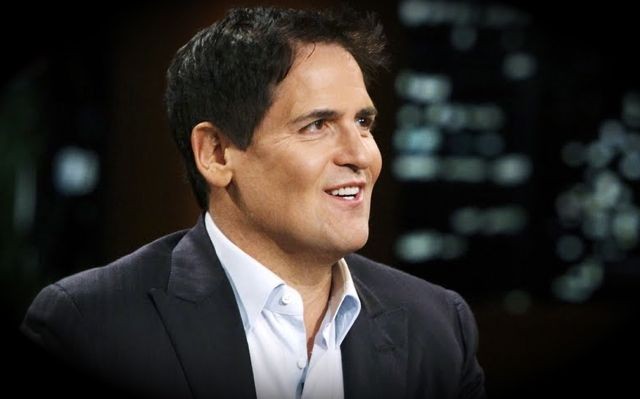Beware This Rookie Investing Mistake That Anyone Can Make
Post on: 1 Май, 2015 No Comment

About
In my career as a financial adviser, I reviewed thousands of customer portfolios. After a while, I saw the same money-management mistakes time and time again. One of the most common money blunders was having too much money in a single investment — the classic putting all of your eggs in one basket mistake.
It wasn’t just beginning investors who got themselves into this dangerous financial situation. Even savvy, experienced clients did.
The names have been changed to protect people’s privacy, but the scenarios below are very real. Here are four ways that people end up with wildly unbalanced portfolios, and how to avoid this classic investing pitfall in your own portfolio.
Gina: Tying her fortune to her employer’s future
I like chocolate cake just as much as the next gal, but if I eat too much of it, I’m in for a huge stomachache. The same goes for owning too much company stock of an employer. I remember meeting Gina, an employee of a nearby Hershey (HSY ) plant. As I reviewed her 401(k) statement, I found that Hershey stock represented more than half of her 401(k) balance. The tale of Enron serves as an example of how this can go horribly wrong. With that company’s demise, employees not only lost their jobs, but also their futures — all the plans they made for their post-9-to-5 lives — because their retirement savings were invested mostly in Enron stock.
Dr. Crane: Mistaking industry knowledge for investing smarts
Dr. Crane, a surgeon, held vast industry knowledge that he felt gave him a leg up on other investors. So he put his money behind a company whose products he strongly believed in, loading up on the company’s stock. (In this case, shares of Pfizer (PFE ) dominated his portfolio holdings.) By doing so, his money was over-concentrated in a single industry — health care — which meant that when the industry suffered, his nest egg deteriorated along with it.
Related Articles
Jean: Avoiding Uncle Sam and getting overwhelmed by her blockbuster investments
Jean despised paying taxes. And when I first met her, she was excited to tell me about how she planned to avoid paying them by holding on to her winning stocks. I had to explain to Jean that this tactic threatened her potential overall portfolio returns. By not harvesting her gains and paying Uncle Sam his share, she increased her position in her winning stocks relative to her other investments. With time, Jean’s unsold winners threatened to over-concentrate her portfolio.
Richard: Doubling down on a hot stock
One afternoon, Richard, a well-meaning investor on the verge of retirement, stopped by my office to tell me about a great investing opportunity he’d heard about from a co-worker. It was a company that had recently IPO’d. Richard recounted for me all of the claims that his co-worker had made about the stock. So impressed was he that logged into his online account, sold a huge portion of his diversified blue-chip stock portfolio, and doubled down on the hot stock tip. Here, again, the concentration in a single investment put his overall wealth at risk, especially if the IPO later fizzled out.
Don’t become a cautionary tale
The most alarming thing about Gina, Dr. Crane, Jean, and Richard is, frankly, that there’s nothing at all extraordinary about their stories. They managed their finances in a perfectly ordinary way, yet all of them put their portfolios in grave danger from a diversification standpoint.
10 Stocks to Buy, Hold and Prosper
Betting on companies that are not only profitable but also have a long history of increasing their dividend payments to shareholders is as good a strategy as you’ll find for increasing wealth without exposing yourself to outsize risk.
Each of these 10 businesses has been issuing ever-higher checks to their investors for at least half a century, according to the dividend-tracking site The Dynamic Dividend .
1. Diebold (DBD ). This maker of safes and other security equipment yields 3% and pays out 50% of its profits as dividends. Management has increased the average payout by 5.4% annually over the past five years.

2. American States Water (AWR ). This company pays a 3.1% yield as of this writing, with 45% of profits committed to dividends. This California water utility was founded in 1929 and has increased its average payout by 3.9% annually over the past five years.
3. Dover (DOV ). Shares of this industrial machinery supplier yield 2.1% as of this writing, paying out 26% of profits as dividends. Management has increased the average payment to shareholders by 11% annually over the past five years.
4. Northwest Natural Gas (NWN ). It pays a 3.9% yield as of this writing, with 73% of profits earmarked for dividends. This Pacific Northwest gas utility celebrated its centennial two years ago and has increased its average payout by 4.7% annually over the past five years.
5. Emerson Electric (EMR ). Another member of the 100-plus club, this supplier of industrial electronics yields 3.2% as of this writing. Roughly 46% of earnings are committed to dividends. Management has raised the payout 9.1% annually over the past five years.
6. Genuine Parts Company (GPC ). Yielding 3.1% as of this writing, this auto parts wholesaler pays 50% of profits back to shareholders as dividends. Management has increased the payout by 6% annually over the past five years.
7. Procter & Gamble (PG ).You already know P&G — it’s one of the world’s most popular consumer products companies, maker of such items as Tide detergent and Pampers diapers. What you might have missed is the company’s 3.3% yield, paid from 60% of annual earnings. Management has increased its spending on dividends by 11.2% annually over the past five years.
8. 3M (MMM ). Originally known as Minnesota Mining and Manufacturing when founded in 1902, 3M — the creator of Post-It Notes — yields 2.7% as of this writing. Management pays out 37% of profits as dividends, and 3M has increased the per-share cut by 3.6% annually over the past five years.
9. Vectren (VVC ). Founded in 1912, this central U.S. utility funds a 4.9% yield by paying 80% of earnings back to shareholders as dividends. Management has increased the payout by 2.4% annually over the past five years.
10. Cincinnati Financial (CINF ). The riskiest bet in the lot, this property casualty insurer pays out more than 150% of its annual profits as dividends. So while the history and current yield — 4.6% as of this writing — are no doubt enticing, management may be forced to curtail payments to shareholders in the coming years.
Should you invest in any of these stocks? That depends on whether you have an interest in learning more about the underlying businesses. And again, don’t invest with money you’ll need in the next five years. Stocks are wonderful at creating long-term wealth, but they’re as dangerous as dynamite over the short term.














